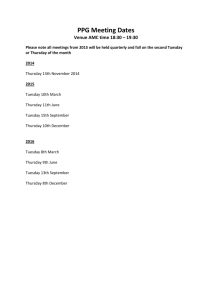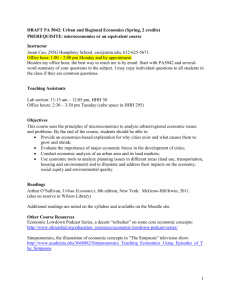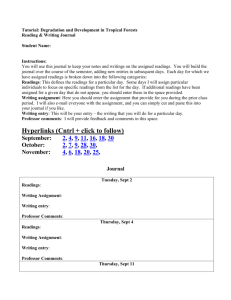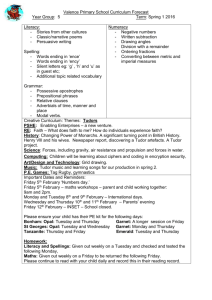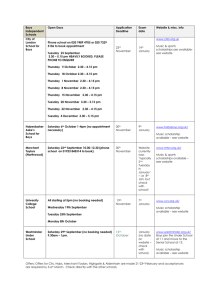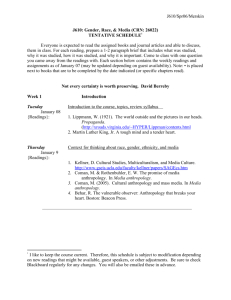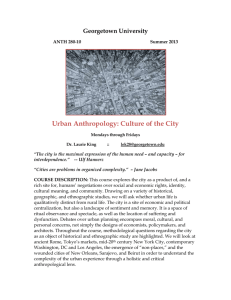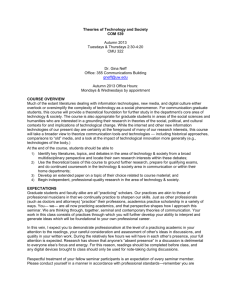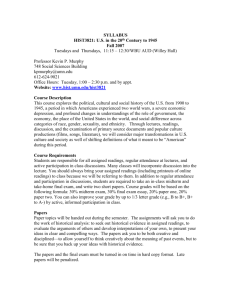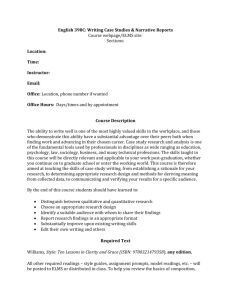Design In Extremis
advertisement
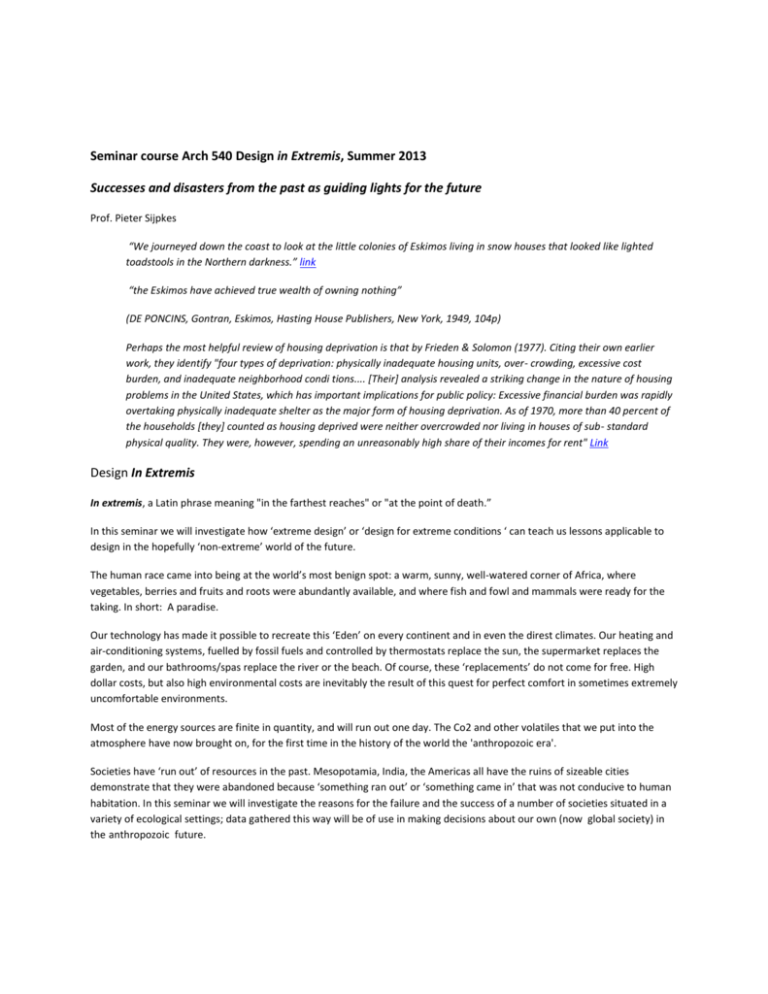
Seminar course Arch 540 Design in Extremis, Summer 2013 Successes and disasters from the past as guiding lights for the future Prof. Pieter Sijpkes “We journeyed down the coast to look at the little colonies of Eskimos living in snow houses that looked like lighted toadstools in the Northern darkness.” link “the Eskimos have achieved true wealth of owning nothing” (DE PONCINS, Gontran, Eskimos, Hasting House Publishers, New York, 1949, 104p) Perhaps the most helpful review of housing deprivation is that by Frieden & Solomon (1977). Citing their own earlier work, they identify "four types of deprivation: physically inadequate housing units, over- crowding, excessive cost burden, and inadequate neighborhood condi tions.... [Their] analysis revealed a striking change in the nature of housing problems in the United States, which has important implications for public policy: Excessive financial burden was rapidly overtaking physically inadequate shelter as the major form of housing deprivation. As of 1970, more than 40 percent of the households [they] counted as housing deprived were neither overcrowded nor living in houses of sub- standard physical quality. They were, however, spending an unreasonably high share of their incomes for rent" Link Design In Extremis In extremis, a Latin phrase meaning "in the farthest reaches" or "at the point of death.” In this seminar we will investigate how ‘extreme design’ or ‘design for extreme conditions ‘ can teach us lessons applicable to design in the hopefully ‘non-extreme’ world of the future. The human race came into being at the world’s most benign spot: a warm, sunny, well-watered corner of Africa, where vegetables, berries and fruits and roots were abundantly available, and where fish and fowl and mammals were ready for the taking. In short: A paradise. Our technology has made it possible to recreate this ‘Eden’ on every continent and in even the direst climates. Our heating and air-conditioning systems, fuelled by fossil fuels and controlled by thermostats replace the sun, the supermarket replaces the garden, and our bathrooms/spas replace the river or the beach. Of course, these ‘replacements’ do not come for free. High dollar costs, but also high environmental costs are inevitably the result of this quest for perfect comfort in sometimes extremely uncomfortable environments. Most of the energy sources are finite in quantity, and will run out one day. The Co2 and other volatiles that we put into the atmosphere have now brought on, for the first time in the history of the world the 'anthropozoic era'. Societies have ‘run out’ of resources in the past. Mesopotamia, India, the Americas all have the ruins of sizeable cities demonstrate that they were abandoned because ‘something ran out’ or ‘something came in’ that was not conducive to human habitation. In this seminar we will investigate the reasons for the failure and the success of a number of societies situated in a variety of ecological settings; data gathered this way will be of use in making decisions about our own (now global society) in the anthropozoic future. Maslov’s pyramid Maslov created a diagram of human needs, layered like a pyramidal cake. In this course we will mainly focus on the two largest, bottom layers of the Maslov diagram. In the seminars we will devise a finer gradation of Maslov’s ‘comfort influences’, or rather the lack thereof in extreme situations as they pertain specifically to shelter. Information collected for the course “History of Housing” will serve as a historical basis of the development of shelter from ‘extreme climatic conditions’ in prehistoric days to extreme sociopathic conditions during the industrial revolution, still occurring today in the developing world. The expanded (but far from complete) list of variables that influence comfort, and in the end health that we will study through readings fall into two groups of phenomena: Physical and Non-physical. Physical phenomena Temperature (Arctic, Antarctic : ‘exposure’, food, water) Humidity (tropical forest, e.g. Congo) Air quality (Beijing) Air pressure (lack of oxygen, Andes) Highest balloon jump this summer by Felix Baumgartner Water (too much: Holland, Bangladesh, Florida; too little: deserts, Arctic ) Sunshine: too much or too little or none Rain/snow/hail/sleet/freezing rain/fog Deserts (vigorous air movement- sand storms/ lack of air movement-extreme heat) “Twenty Thousand Leagues Under the Sea” Jules Verne Extra-terrestrial locations: Moon, Mars, International Space station Food and drink needs: Calorie intake Vitamins Metals Salts Non-Physical influences Psychological influences that negatively influence well-being: Crowding: Kowloon Walled City, Jails Loneliness: Solitary Confinement Alienation: Franz Kafka The main readings will be taken from JSTOR, where a wealth of materials waits to be mined. Some examples are here As a project part of the course students will be asked to build (in small groups) either a 3D conceptual (but yet physical) model of a particular extreme environment, or arrange a demonstration of a nonphysical extreme condition in a performance format. The workshop, the ice lab, the campus or the city’s ‘natural environment’ may be of use to help construct these models or form the background or setting of performances. As a major Paper, each student will pick a specific extreme condition or incident and document it in great detail. Course Schedule (approximate) Tuesday, May 14 Introductory Meeting Discussion of the course’s core idea: Design In Extremis Tuesday, May 21 Videos of Extreme conditions: “Nanook of the North” and others. Thursday, May 16 Discussion on the number of sub-topics that we will tackle; groups posted for students to sign up Tuesday May 28 Readings: presentation/discussion Tuesday June 4 Readings: presentation/discussion Thursday, May 31 Readings: presentation/discussion Thursday, June 6 Readings: presentation/discussion Thursday, May 23 Groups formed, round table about preliminary ideas. Sources for readings discussed. Papers due Tuesday June 11 Discussion on ideas for models/performances Tuesday June 18 Presentations Thursday, June 13 Discussion on ideas for models/performances Thursday, June 20 Presentations "If you use only one reference, plagiarism will be hard to avoid" Prof. Peter Collins 1972 "To vitalize building materials, to animate them with a thought, a state of feeling, to charge them with a social significance and value, to impart to them the best that is in the people, as the eye of the poet, looking beneath the surface of life, sees the best that is in the people - such is the real function of the architect, for understood in these terms, the architect is one kind of poet, and his work one form of poetry using the word in its broad, inclusive actual sense. Louis Sullivan References http://www.arch.mcgill.ca/prof/sijpkes/aaresearch-2012/in-extremis-file/references/
